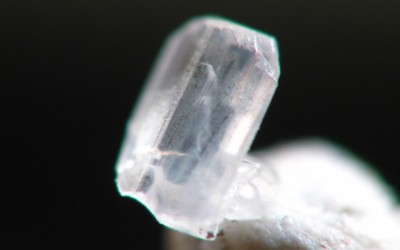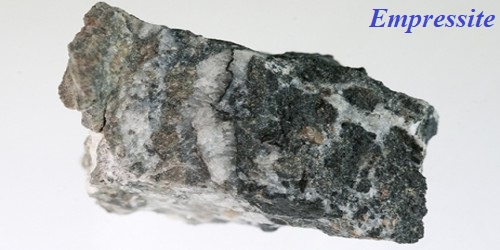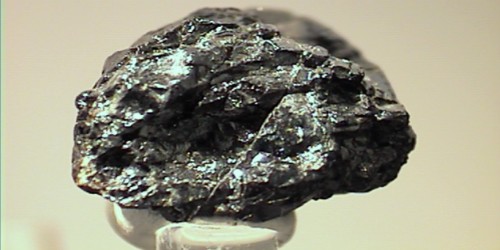Grandreefite is a rare secondary lead sulfate-fluoride mineral with a general chemical formula, Pb2SO4F2. It is a monoclinic-prismatic colorless mineral containing fluorine, lead, oxygen, and sulfur. It is named for the location in which it was discovered in 1989, the Grand Reef Mine in Graham County, Arizona.
Grandreefite is usually found in the mine in isolated veins containing hydrothermal copper, silver, and lead minerals hosted in oxidized breccias.
General Information
- Category: Sulfate minerals
- Formula: Pb2SO4F2
- Crystal system: Monoclinic
- Crystal class: Prismatic (2/m) (same H-M symbol)

Fig: Grandreefite – lead sulfate-fluoride mineral
Properties
Grandreefite is monoclinic, falling in the 2/m symmetry group. Crystallographically this means, grandreefite has three axes of unequal length, with two angles at 90° to one another and a third, obtuse angle. Its calculated relief, i.e. its relative difference in index of refraction compared to the surrounding medium’s index of refraction, is 1.96–1.98; and its birefringence is .025.
- Color: Colorless
- Fracture: Conchoidal
- Tenacity: Brittle
- Mohs scale hardness: 2.5
- Luster: Subadamantine
- Streak: White
- Specific gravity: 6.96
- Optical properties: Transparent, Biaxial(+)
Occurrence: A rare secondary mineral in isolated vugs in the oxidized portions of a breccia-hosted hydrothermal Cu–Pb–Ag deposit.
Association: Pseudograndreefite, laurelite, aravaipaite, galena, fluorite, anglesite.
Uses
Grandreefite, while not a valuable mineral in terms of commercial use, is useful in the sense that it is a good indicator of the very specific environment in which it forms and therefore the same conditions required to produce minerals similar to it in structure, composition, etc.
Information Source:
















